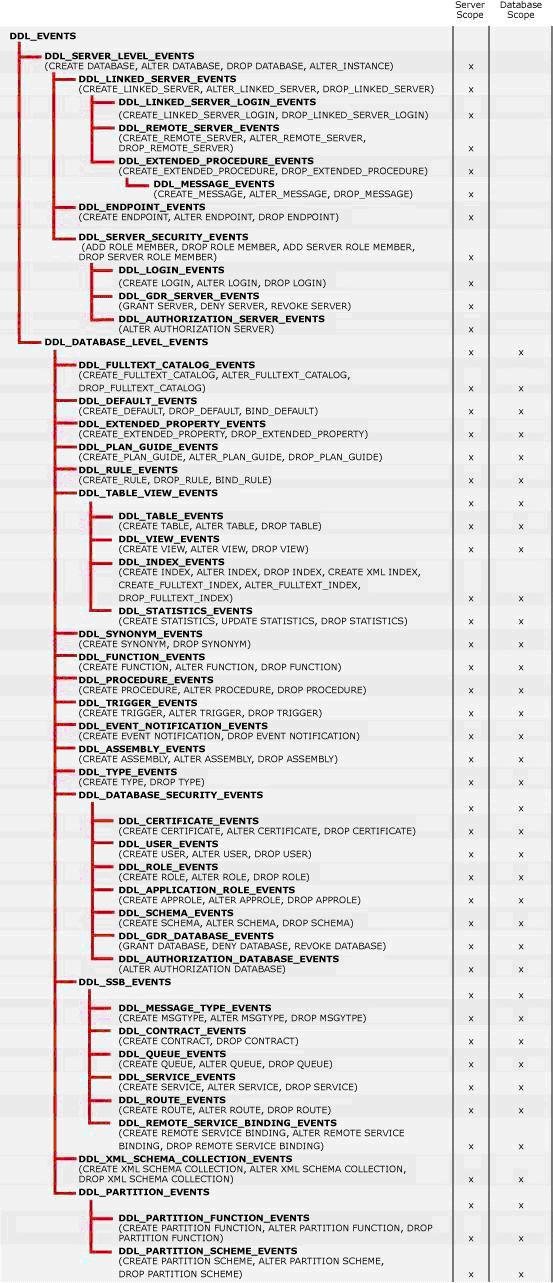Trigger
A trigger is a special kind of a
store procedure that executes in response to certain action on
the table like insertion, deletion or updating of data. It is a database object
which is bound to a table and gets executed automatically. You can’t explicitly
invoke triggers. The only way to do this is by performing the required
action on the table that they are assigned to.
Types of Triggers
a) Login Trigger
b) DDl Trigger
c) DML Trigger
Logon triggers fires in
response to a LOGON event i.e. when a user session is established.
Session is established before authentication. Logon triggers
fire after the authentication and phase of logging in finishes, but before the
user session is actually established. Therefore, all messages originating
inside the trigger that would typically reach the user, such as error messages
and messages from the PRINT statement, are diverted to the SQL Server error
log. Logon triggers do not fire if authentication fails.
Login Triggers is useful for the following
purpose
Restrict a user from simultaneously opening more than no of
connections with the Server.
Login related auditing in table for
tracking purpose
USE master;
GO
CREATE LOGIN Testaccount
WITH PASSWORD = MUST_CHANGE ' MUST_CHANGE,
CHECK_EXPIRATION
= ON;
GO
GRANT VIEW SERVER STATE
TO login_test;
GO
CREATE TRIGGER Tr_ login
ON ALL SERVER FOR LOGONAS
ON ALL SERVER FOR LOGONAS
BEGIN
Print
“welcome” -- any task
END;
DDl Trigger
Trigger firing on DDL commands (Like create / drop / alter on server
objects like table /sp / function / schema ….).
For more info Please go throw DDl events available for triggers http://msdn.microsoft.com/en-us/library/ms189871(v=sql.90).aspx
DDL Triggers is useful for the following
purpose:
• Auditing
• Regulating database or server operation
• Securing the database or server from malpractice
• Issue an alert when a DDL event occurs in Database or Server
• Auditing
• Regulating database or server operation
• Securing the database or server from malpractice
• Issue an alert when a DDL event occurs in Database or Server
Ie.
USE AdventureWorks
GO
CREATE TRIGGER TR_PreventcreatedSP
ON DATABASE
FOR CREATE_PROCEDURE
AS
PRINT 'No one can create store proc till PreventcreatedSP is available'
ROLLBACK;
DML Trigger
Triggers firing on DML commands (Insert /Update/Delete)
DML Triggers is useful for the following
purpose:
DML triggers can cascade changes through
related tables in the database; however, these changes can be executed more
efficiently using cascading referential integrity constraints.
They can guard against malicious or incorrect
INSERT, UPDATE, and DELETE operations and enforce other restrictions that are
more complex than those defined with CHECK constraints.
DML
triggers can reference columns in other tables (check cannot)..
They can evaluate the state of a table before
and after a data modification and take actions based on that difference
(concept of Magic table ).
Multiple DML triggers of the same type (INSERT,
UPDATE, or DELETE) on a table allow multiple, different actions to take place
in response to the same modification statement.
Constraints can communicate about errors only
through standardized system error messages. If your application requires, or
can benefit from, customized messages and more complex error handling, you must
use a trigger.
DML triggers can disallow or roll back changes
that violate referential integrity, thereby canceling the attempted data
modification. Such a trigger might go into effect when you change a foreign key
and the new value does not match its primary key. However, FOREIGN KEY
constraints are usually used for this purpose.
Events
AFTER trigger (AFTER
triggers are executed after the action of the Dml
action)
INSTEAD OF trigger is used to perform error or value checking on
one or more columns and the perform additional actions before insert, updating
or deleting the row or rows.
Ie.
CREATE TRIGGER tr_TableInsertTrig ON Table
INSTEAD OF INSERT
AS ...
CREATE TRIGGER tr_TableInsertTrig ON Table
AFTER INSERT
AS ...
Event chart for DDL
